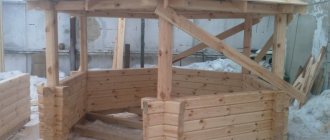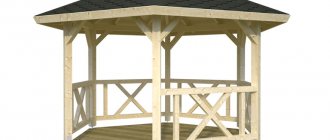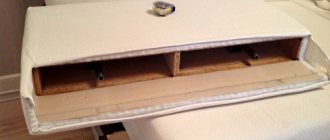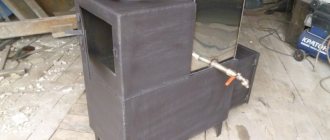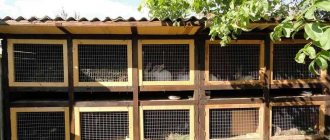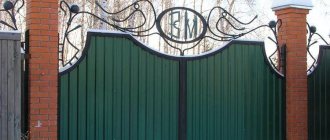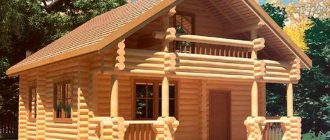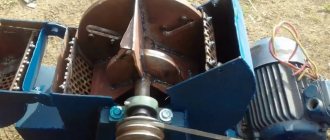Your own greenhouse on your personal plot is an ideal way to get fresh vegetables earlier than from open ground, and eat them until late autumn. In addition, the plants turn out stronger and healthier in it than in the open air. They are less susceptible to diseases and protected from bad weather, which often destroys the harvest. There will be no problems with a greenhouse to obtain your own high-quality seedlings, for example, tomatoes.
But if you buy a greenhouse in stores, then the pleasure is not cheap. Therefore, more and more owners prefer to do it themselves. Fortunately, there is nothing overly complicated in this, and the material and tools are easily available for purchase. As a result, the cost of your own greenhouse is much lower than from a store.
Advantages of a polycarbonate greenhouse
In various sources you can find many photos of polycarbonate greenhouses. Often such greenhouses are purchased in a store, where their further installation is also arranged directly on the garden plot.
But independent construction of greenhouses is also common, when gardeners show real imagination and they become the pride of the entire site.
Flaws
In addition to the strengths, there are also weaknesses. First of all, this is the flammability of the material. When exposed to an open source of fire or hot objects, it begins to melt, losing its previous shape.
Polycarbonate is also relatively expensive compared to other materials. However, there is a wide range of this material on sale in different price categories, which allows each summer resident to choose the most suitable option for himself.
Choosing a greenhouse design
A big advantage of independent work on the construction of this structure is that it is possible to create the most unusual forms of greenhouses, which differ from the standards that can be purchased in the store.
The most common forms of greenhouses are those that resemble peculiar arches. Tent forms are also often found, although these are only the most common ones, and on sites you can find many more interesting and unusual designs.
Strengths
Compared to other materials from which greenhouses are made, polycarbonate stands out significantly, having a large number of strengths.
First of all, it is necessary to note the high transmittance of sunlight and the possibility of regulating it by using material of different colors.
Compared to other materials, polycarbonate is highly resistant to mechanical damage, which makes it literally a leader in this matter. It is also not affected by weather conditions. This design can stand in one place for more than 20 years without significant breakdowns or shortcomings.
Due to the flexibility of the material, the greenhouse can be given absolutely any shape, which increases the degree of harmony of this building with other buildings on the site. They also have an aesthetic appearance.
Polycarbonate arch
Often, ready-made greenhouses can be large enough for a small gardening area. Therefore, the installation of greenhouses similar to arches is often chosen. They have many advantages.
Firstly, they do not take up much space, and secondly, they are quite easy to move from place to place, which cannot be said about other more global projects that rely on a foundation. Such a greenhouse can also be created with additional reinforcements if a permanent location is chosen for it.
The allowed distance from the main arcs, which are guides, is no more than two and a half meters. It is these parameters that make it possible to create the most durable structure in which only the best vegetables are sure to grow.
Other cladding materials
The greenhouse can be covered with any other covering material. It can be film or non-woven material. They are cheaper than polycarbonate, but will also last much less. The only thing you can’t protect polycarbonate from is heavy hail. But here you need to rely on your desires and financial capabilities.
film will only last one season, no matter how strong it is, you will have to buy it and fix it every year. But it is easy to do.
Non-woven material is good because it perfectly allows air and moisture to pass through, and this is necessary for plants in particularly hot summers. Depending on the density, the service life of such material is up to 5 years. It is removed for the winter and attached to the frame again at the beginning of the season.
Features of a greenhouse in the form of an arch
It is certainly more mobile and suitable for small areas. But it is worth considering one extremely important factor, namely how access to the plants will be achieved. Since if you make the arch too wide, it may be difficult in the future, for example, to water the plants or fertilize them.
Also, in an arch that is too wide, there will be a problem with tying up plants. Therefore, it would be a good idea to make a preliminary sketch of what the future structure will look like.
Installing a frame for walls
For the frame, you can only use a block with a cross section of 50x50 mm if the dimensions of the greenhouse are small. In this case, the distance between the posts is made equal to 80-100 cm, observing the principle of equidistance (the specific distance depends on the total length and width of the perimeter).
For large greenhouses, the main load-bearing supports, including for doorways, are made of timber with a section of 100x100 mm, and for intermediate supports, lintels, struts and roof rafters, a section of 50x100 mm is chosen.
In this case, the main reason is not the weight of the structure (1 m2 of 8 mm thick cellular polycarbonate weighs only 1.5 kg), but high wind loads and snow pressure.
The installation of the frame is carried out in the following sequence:
- The timber is cut to size. At the same time, material selection is carried out, avoiding dead knots and other defects.
- Treat the wood with an antiseptic.
- They prepare the foundation for installation of the lower frame - isolate the concrete from contact with wood. The base of the strip foundation is covered with rolled waterproofing (roofing felt, rubemast, etc.). Gaskets made of the same material are placed at the ends of the piles.
- Mount the bottom trim on the foundation. The corner joints of the timber are secured in the simplest way - in half a tree. For a strip foundation, a butt joint can be used, but it requires fixation with metal mounting plates. First, the strapping elements are fastened “preliminarily” - only to each other. Then the diagonals are checked and finally fixed with anchors to the foundation.
- Install load-bearing posts - in corners and in doorways. If the greenhouse is large and the top frame purlins are long, then immediately install one intermediate post each so that the top frame beams do not sag.
Each rack is aligned vertically, attached to the bottom frame and secured with temporary stops. - Mount the top trim. Check compliance with the levels and planes of each structural element. If necessary, adjust the position of the racks.
- Install the remaining racks. They install crossbars, jibs, door frames and arrange openings for windows or transoms.
Polycarbonate greenhouse in the form of a ball
An unusual design that will attract the attention of everyone who passes by the site. It is undoubtedly not easy to create, but following the detailed instructions, it is also quite possible to create it yourself. This design is very convenient for tall plants, as it will provide room to roam.
But you should not build it too high, as then it will be less stable. The optimal height is considered to be slightly more than two meters.
Models that resemble a polyhedron look interesting. Moreover, in such greenhouses it is possible to make some of the compartments open, thus achieving the ventilation necessary for the plants.
Characteristics of the structure
The main difference between industrial greenhouses and country greenhouses is the scale of the structure. In terms of these parameters, industrial buildings are significantly superior to their homestead counterparts. The area of such buildings can be measured in hundreds and sometimes thousands of square meters.
Such large structures require a heavily reinforced frame that can withstand the load of greenhouse cladding. It is also necessary to take into account the periodically added snow load. Frame failure can completely paralyze work.
To maximize profits from the harvest, large-scale greenhouses use the following technical capabilities:
- heating;
- ventilation;
- artificial lighting;
- use especially ;
- isolation from weeds and harmful insects;
- saturation of the internal space of the greenhouse with carbon dioxide.
Homemade polycarbonate greenhouse
A name that everyone knows. Durable design suitable for almost all plants that require constant heat to mature.
This type of greenhouse is often sold ready-made, but it is also not so difficult to create them yourself. To do this, you need a foundation and strong supports, onto which the polycarbonate will be directly attached in the future.
Coating
Greenhouses come with glass, polyethylene and polycarbonate cover:
- Glass is distinguished by its fragility, heavy weight and labor-intensive installation process.
- Polyethylene wears out quickly and collects water on the surface of the film.
- Polycarbonate is strong, easy to work with and durable.
Today, the best greenhouses are polycarbonate-covered greenhouses.
Choosing a location for a polycarbonate greenhouse
As with any structure that is to be used for more than one season, it is extremely important to choose the location correctly.
For a greenhouse, the most flat area is suitable, which it is advisable to prepare in advance. You should not install greenhouses where high humidity constantly accumulates. It is advisable to treat the soil on which the structure will stand with sand mixed with gravel.
Subtleties of doing business
You can reduce the cost of production and increase profits by purchasing materials from the manufacturer. This can be done by concluding agreements for the supply of products. And in order to conclude an agreement, you need to register an individual entrepreneur.
Only an individual approach to each client will help you win the competition and, over time, purchase professional equipment that will allow you to establish a serious technological process.
Video on the topic: Greenhouses - Video review
Selection of questions
- Mikhail, Lipetsk — What discs should I use for cutting metal?
- Ivan, Moscow - What is the GOST for rolled sheet steel?
- Maxim, Tver - Which racks for storing rolled metal products are better?
- Vladimir, Novosibirsk — What does ultrasonic processing of metals without the use of abrasives mean?
- Valery, Moscow - How to forge a knife from a bearing with your own hands?
- Stanislav, Voronezh — What equipment is used for the production of galvanized steel air ducts?
How to choose polycarbonate for a greenhouse
To get the best greenhouses, it is worth choosing the optimal type of polycarbonate. It is important to note that you can now find many fakes and low-quality products on the market. Therefore, you should only buy material from trusted and reliable companies.
The material itself varies in density. So for colder regions, from a climate point of view, it is worth choosing the most dense parameters. And, conversely, for more southern regions of the country, lighter parameters will be sufficient.
All these characteristics, as a rule, can be seen either directly on what the material is supplied in, that is, on its packaging, or you can consult with a specialist. It is worth noting that low-quality goods do not have such indicators and, as a rule, are very poorly packaged.
Form, design and additions
A greenhouse can become an important design detail of a site. Its shape is chosen based on the general style of the site. For fans of traditional solutions, a greenhouse in the style of the Victorian era or a Gothic cathedral is suitable. It is important to consider the garden environment around the greenhouse; the design should repeat the shape, color and scale of the glazing. Vertical lines can be emphasized with the help of a decorative fence, trellis, or thuja planted nearby.
Next to the greenhouse Source spetspark.ru
Polycarbonate greenhouse foundation
Of course, the types of garden greenhouses may vary, but it is important that everyone has a strong and reliable foundation. Therefore, no matter what type of greenhouses is chosen for installation on the site, it is important to consider installing the foundation.
There are many foundation options for these structures, but the main criterion for choosing the most suitable ones should be the soil on which it is planned to install the greenhouse. For example, if the soil is in a warmer and drier region, then it is enough to create a sand cushion.
The situation is more complicated in regions where the climate varies from very humid to cold. There is severe soil freezing here. Often, they approach the formation of the foundation thoroughly, cementing it additionally and strengthening it, and even this approach does not guarantee the strength of the structure for a long period of time.
But no matter what project forms the basis of the future greenhouse, it is important to create it based on its parameters. The future functionality of the greenhouse depends on the accuracy and preservation of the dimensions of all elements.
Sometimes in such structures, in addition to, for example, windows, they also add the possibility of independent irrigation. This is very convenient, especially if daily watering is not possible. In addition, well-watered plants will give a more beautiful harvest, which will certainly please those who worked on creating the greenhouse.
Briefly about the main thing
The first greenhouse buildings, which appeared at the end of the 16th century, a hundred years later spread throughout Europe and became a familiar feature of the rural landscape. The English greenhouse is a special type of structure. It is distinguished from the usual greenhouses by its design features: a characteristic roof, high walls, original glazing, the presence of a vestibule and additional greenhouses on the sides.
Traditional Chelsea greenhouses were made of wood and glass. For modern summer (seasonal) options, a post-transom system is used. For a year-round greenhouse, an aluminum profile and double-glazed windows are suitable. All buildings look elegant thanks to their elongated shape, lancet windows and high foundation with a plinth.
Ratings 0
